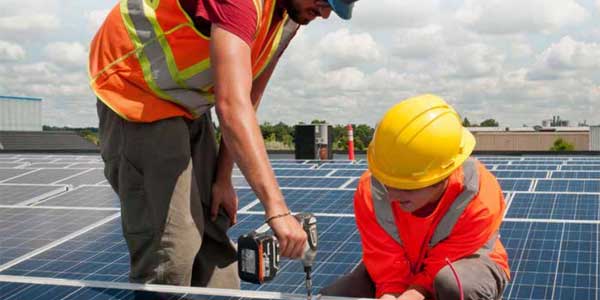Ontario has come a long way in just seven years. Back in 1999, seeing solar panels on a rooftop was a rare sight in this province. And finding one of the couple of dozen wind turbines then spinning would have required a map and a compass.
Today, more than 20,000 Ontario homes, businesses schools and farms sport solar panels. Hundreds of wind turbines dot our rural landscape, often in farmers’ fields that are now producing local energy as well as local food. And large solar arrays are becoming a common sight on industrial rooftops and marginal lands.
This surge in development of clean, green energy has one common driver: Ontario’s policy of paying set prices for solar, wind, biomass, biogas and water generated electricity.
Thanks to these “feed in tariffs” (FITs), we’ve gone from having almost none to 8% of our electricity being generated by the sun, wind and biofuels in just seven years, while also eliminating the use of dirty coal.
But what most people don’t know about the province’s FIT system is that it has also been critical to the development of community power in this province — renewable power systems owned and operated by co-ops, Indigenous communities, school boards, hospitals, non-profit housing providers and municipalities. More than 30 First Nations have invested in renewable energy projects on traditional lands thanks to the FIT program and the associated Aboriginal Loan Guarantee fund.
The FIT program includes special incentives for community ownership, offering a one cent per kilowatt hour bonus (“price adder”) for community controlled projects and setting aside some of the available capacity in each FIT procurement round for community-led projects.
Why does community ownership matter? For a bunch of reasons. First it allows local people to invest in renewable energy and to be a part of and directly benefit from the clean power revolution sweeping the world. This creates a stronger sense of connection – and more support – for the development of the green energy we need to help tackle climate change.
Polling done for the Federation of Community Power Co-ops found that 53% of Ontarians feel that community ownership would make them more likely to support a wind energy project and 66% would be more likely to support a community-owned solar project. Overall, 78% thought it was important for Ontario to increase community ownership of renewable energy projects.
Community ownership has the added advantage of being a “door opener” for the wider range of actions that will be needed to lower our climate damaging greenhouse gas emissions. Citizens who see first-hand how renewable energy is benefiting their community are likely to be more interested in taking additional actions, like improving the energy efficiency of their home. Moreover, by leveraging local dollars, community groups are financing the low-carbon transition.
Meanwhile, thanks to the valuable project development experience gained through renewable energy deployment, co-ops are well positioned to help their members adopt other measures, whether it is home energy retrofits or developing alternative heating systems, such as geothermal or renewable natural gas (biogas).
For institutions like school boards, solar rooftops are a way of not only educating students about the power of emissions free sources of energy, they also provide badly needed revenue for capital repairs and improvements.
Unfortunately, the future of Ontario’s Feed-in Tariff system is extremely uncertain. The province is moving more and more to competitive bidding for renewable energy procurement and has made few provisions for community involvement in these complex and costly competitive bidding processes.
Our outdated co-op act also leaves green energy co-ops in a straight jacket with a narrow mandate to develop only renewable energy systems.
To continue to build the power of community, we need to address these uncertainties and constraints. The Ontario government needs to maintain a FIT program for community owned projects and it needs to give co-ops the authority to be complete energy efficiency and alternative energy leaders.
That’s a recipe for ensuring that people have the power when it comes to building a modern green energy system.












Comments